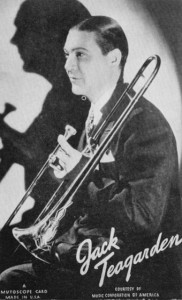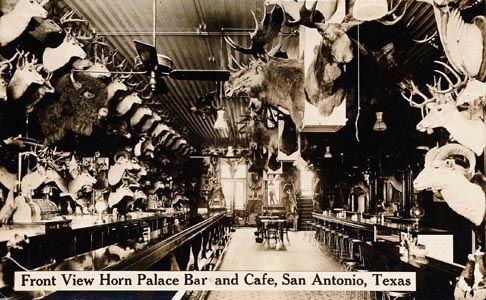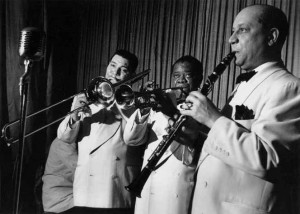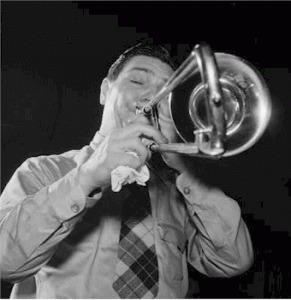Jack Teagarden was a self-taught
musician and one of the great
mavericks of early jazz. In the
1920s and 30s he re-invented the
jazz trombone—from pumping New
Orleans 'tailgate trombone' to
his own sophisticated swing.
Growing up in the Southwest Jack acquired an affinity for the blues and blue tonality in his trombone playing and singing that was unusual for a white man in the early days of jazz. Many attribute this to his boyhood exposure to black gospel revival meetings held in an open field at the end of his street in Vernon, Texas. He said, "I used to sit out on the fence and listen to the spirituals. I knew right then and there that was when I could hear my heart...I loved them and I liked the stories they told."
Jack Teagarden got his first steady job in 1920 at the Horn Palace, a San Antonio roadhouse not far from The Landing, home of Riverwalk Jazz. He was a fifteen-year-old kid with slicked-back hair and a broad, handsome face enjoying his first exposure to the big city.
A year later, on the heels of a shoot-out he witnessed at the Horn Palace and the notorious 'Flood of '21,' Jack decided to hit the road. He headed for Houston and Galveston, where he began a long association with the reclusive pianist Peck Kelley and his band Peck's Bad Boys.
The year was 1927 when Jack made his way to New York, soon to be discovered and in demand with major bandleaders. A decade later, after a five-year stint with the Paul Whiteman Orchestra, Jack Teagarden was a jazz star enjoying his success as a national celebrity and leading his own big band. Throughout WWII, he kept his big band together and performed for troops overseas.
A collaboration with The Louis Armstrong All-Stars in the 50s produced a series of memorable recordings, including an Armstrong and Teagarden duet on "Rockin' Chair." Armstrong often spoke of his appreciation for Teagarden. He once said, "I love his music ... the soul he displays when he's pouring out his heart in that trombone."
This week on Riverwalk Jazz The Jim Cullum Jazz Band celebrates the musical legacy of Jack Teagarden with the help of radio show favorites—trombonists Bob Havens, Dan Barrett and Rex Allen; pianists John Sheridan and Dick Hyman; and New Orleans vocalist Banu Gibson.
Jim Cullum recalls the role Jack Teagarden played in his family's life, "My father played with Teagarden's orchestra in the 40s. He first met Jack in Dallas in about 1940, and several times they jammed together. Neither of them could get enough music and they would play all night. That was the start of a long friendship. In 1946 my father joined Jack's big band and played saxophone in the reed section and clarinet in a small seven-piece group that would come down front. They called it a 'band within a band.' That's what my father enjoyed the most—improvising with Jack."
Born in 1905 in Vernon, Texas, Jack Teagarden died in January 1964.
Trombonist Jack Teagarden. Photo courtesy swingdjresources.
Text based on Riverwalk Jazz script by Margaret Moos Pick ©2009





